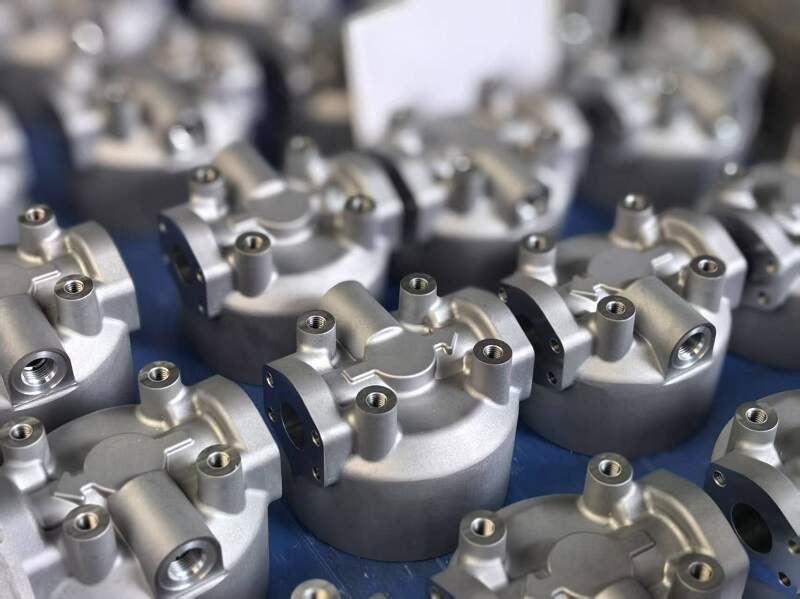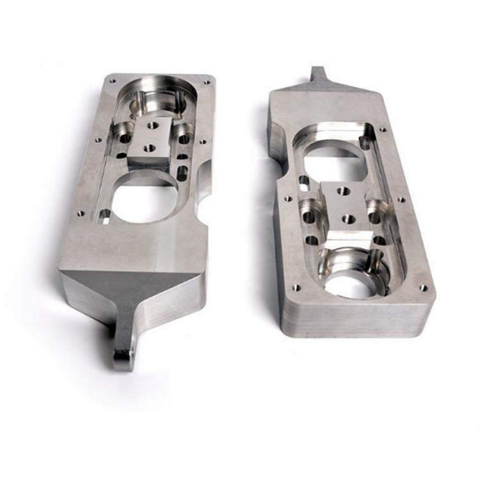Aluminum Casting Techniques: a Deep Study Products and Approaches for Success
Aluminum casting techniques play a necessary function in production. Numerous techniques exist, each matched to various applications and demands. Sand casting is favored for larger parts, while die casting is known for its precision in high-volume production. Investment casting supplies comprehensive styles with superior surfaces. Understanding these differences can substantially influence job end results. Aluminum Foundry. Picking the appropriate method is not always simple, leading to crucial considerations that need to be discovered better.
Understanding Aluminum Casting: A Summary
Aluminum casting is a vital manufacturing procedure employed across numerous markets to produce intricate components with high precision. This technique includes pouring liquified aluminum right into a mold, allowing it to strengthen and take the shape of the preferred component. The adaptability of aluminum, integrated with its light-weight and corrosion-resistant residential properties, makes it an excellent choice for applications in auto, aerospace, and customer items.
Different casting methods exist, each suited to certain needs and job ranges. Elements such as mold and mildew products, cooling prices, and the complexity of the design play a substantial duty in establishing one of the most reliable approach. Additionally, the residential or commercial properties of the aluminum alloy made use of can impact the end product's resilience, surface, and stamina surface.
Understanding the fundamentals of aluminum casting makes it possible for producers to maximize manufacturing processes, reduce waste, and guarantee top quality result, which is essential in today's competitive market.
Sand Casting: Strategies and Applications
Among the various techniques utilized in aluminum casting, sand casting stands apart because of its versatility and cost-effectiveness. This technique entails developing a mold and mildew from a combination of sand and binder, which can be formed to suit complicated layouts. Once the mold is ready, molten aluminum is poured right into it, enabling intricate features and details to be recorded.
Sand casting is specifically advantageous for producing large components and low-volume manufacturing runs, making it perfect for automotive components, equipment components, and artistic sculptures. The technique also accommodates a variety of aluminum alloys, boosting its versatility in numerous applications. In addition, using sand as a mold material enables simple reclamation and reuse, adding to eco lasting methods. Nevertheless, achieving high dimensional precision can present challenges, demanding knowledgeable workmanship and cautious control of the casting procedure. In general, sand casting continues to be an essential method in aluminum shops worldwide.
Die Casting: Precision and Efficiency
Die casting is an extremely reliable approach of creating aluminum elements with phenomenal dimensional precision and surface coating. This process involves requiring molten aluminum right into a precisely machined mold under high stress, which enables for elaborate designs and marginal product waste. The fast cooling of the alloy within the mold and mildew leads to a strengthened component that usually requires little to no extra machining.
Die casting is particularly helpful for high-volume manufacturing runs, where consistency and speed are paramount. It supports the development of intricate geometries, making it suitable for different applications, consisting of vehicle, aerospace, and durable goods.
The procedure can accommodate different aluminum alloys, enhancing the mechanical properties of the ended up items. With its capacity to produce lightweight visite site yet durable parts, die casting sticks out as a favored technique in contemporary production, providing both precision and performance in aluminum casting.
Financial Investment Casting: Information and Intricacy
Financial investment casting, additionally called lost-wax casting, is a versatile and exact approach for generating intricate aluminum components. This strategy is specifically valued for its ability to create intricate geometries and fine information that are typically unattainable through various other casting approaches. The procedure begins with a wax pattern, which is coated in a ceramic shell. When the covering solidifies, the wax is thawed away, leaving an in-depth mold and mildew for aluminum pouring.
The advantages of investment casting include exceptional surface finish and dimensional precision, reducing the demand for comprehensive machining later. It is especially advantageous for tiny to tool production runs where precision is vital. This approach suits numerous aluminum alloys, enhancing its applicability across sectors. aluminum casting. Inevitably, financial investment casting attracts attention for its capability to deliver both visual charm and useful performance in aluminum components, making it a favored selection for developers and designers looking for facility services

Selecting the Right Method for Your Job
Just how can one identify one of the most ideal aluminum casting technique for a specific task? The choice process rests on several essential variables, browse this site consisting of the complexity of the style, the wanted surface finish, and manufacturing quantity requirements. For complex layouts, investment casting usually verifies advantageous due to its capacity to capture great details. Alternatively, sand casting may be favored for larger, less complicated components, offering cost-efficiency and versatility in production.
In addition, factors to consider regarding tolerances and mechanical properties of the end product are essential. For high-performance components, die casting may be the very best selection, as it provides remarkable dimensional precision and surface area top quality. Additionally, understanding the product properties and compatibility with the selected method is essential for making sure the success of the task. Eventually, a detailed examination of these aspects will certainly lead the decision-making procedure, leading to one of the most effective aluminum casting approach for the particular project available.
Frequently Asked Inquiries
What Is the Environmental Influence of Aluminum Casting Approaches?

How Can I Enhance the Surface Area Complete of Cast Aluminum?
To boost the surface finish of actors aluminum, one can use strategies such as sandblasting, polishing, and using finishes. Correct mold style and temperature level control likewise substantially enhance the last surface top quality of the cast item.
What Security Precautions Should Be Taken Throughout Aluminum Casting?
Throughout aluminum casting, important safety precautions consist of putting on protective gear, making sure proper air flow, making use of fireproof materials, maintaining a risk-free range from liquified metal, and sticking to tools safety and security protocols to stop injuries and crashes.
How Do I Troubleshoot Usual Casting Defects?
To fix usual casting defects, one ought to inspect the mold and mildew for damages, evaluate the alloy composition, check pouring temperature level, readjust cooling prices, and guarantee correct airing vent to decrease air entrapment and improve casting high quality.
What Are the Prices Related To Different Aluminum Casting Techniques?
The costs connected with various aluminum casting strategies differ significantly, influenced by aspects such as material costs, equipment, labor, and manufacturing scale. Budget factors to consider are important for choosing one of the most appropriate casting method for details jobs.
Sand casting is favored for link bigger elements, while die casting is known for its precision in high-volume manufacturing. Among the numerous methods utilized in aluminum casting, sand casting stands out due to its versatility and cost-effectiveness. Die casting is a highly reliable technique of creating aluminum parts with remarkable dimensional accuracy and surface area finish. Investment casting, also recognized as lost-wax casting, is a functional and specific technique for producing intricate aluminum elements. Just how can one identify the most ideal aluminum casting technique for a particular task?